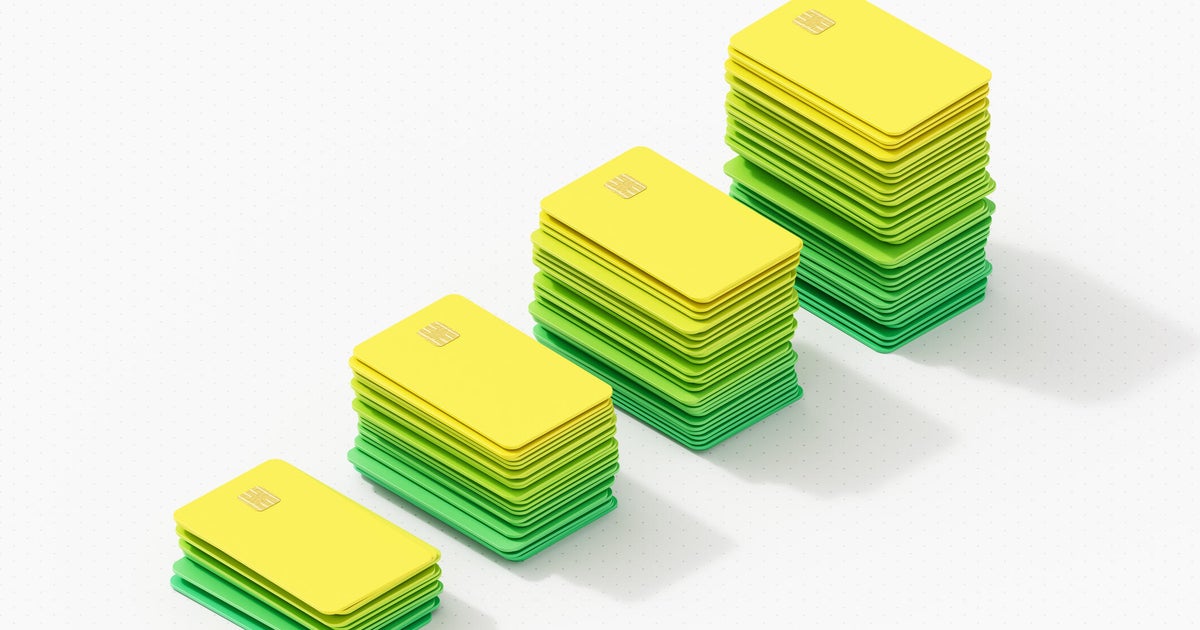Credit card debt is higher than ever: 5 ways to reduce what you owe now

Getty Images
Credit card debt is continuing to climb, and it’s not just inching upward, either. Americans added $27 billion to their credit card balances in the second quarter of 2025, pushing the total credit card debt tally to a staggering record-high $1.21 trillion nationwide, according to the latest quarterly Household Debt and Credit Report from the Federal Reserve Bank of New York. That represents a 2.3% increase from the previous quarter and an uptick of nearly 6% compared to this time last year.
And it’s not just the rising credit card balances that are cause for concern. According to the report, nearly 7% of credit card balances have also transitioned into delinquency over the last year. That’s a signal that more borrowers are struggling to keep up with their credit card payments as interest rates remain stubbornly high at nearly 22% on average. Rates that high can cause card balances to balloon quickly, especially as the compound interest charges accrue.
With balances at near-record highs and delinquencies on the rise, and with economic uncertainty continuing to loom, now is the time to take action. Luckily, there are several strategies you can use to get ahead of your debt and start to regain control of your finances.
Find out more about the debt relief strategies available to you now.
5 ways to reduce your credit card debt now
If you want to lower your credit card debt, the following strategies could help you do that:
Consider debt consolidation to simplify and save
If you have multiple credit card balances and decent credit, a debt consolidation loan might be a good way to simplify your payments and potentially lower your interest rate. With this method, you take out a personal or debt consolidation loan and use the proceeds to pay off your credit card balances. You’re then left with just one fixed monthly payment to manage.
The key to lowering your debt here, though, is securing a lower interest rate than what you’re currently paying. Lowering your rate by even a few percentage points can save you hundreds or even thousands of dollars in interest charges over time, especially if you’re carrying large balances.
Explore your debt relief options and find out how to get started today.
Transfer your balance to a 0% APR credit card
Another option for reducing interest is taking advantage of a 0% balance transfer offer for an introductory period, typically between 12 and 21 months. This wipes out the interest charges for the full introductory period, which can be a smart strategy if you’re confident you can pay off most or all of your balance before the promotional period ends.
Just keep in mind that most balance transfer cards charge a balance transfer fee, which is typically 3% to 5% of the transferred amount, so you’ll want to do the math to ensure that the savings are worth the extra costs. You should also understand that if you don’t pay off the balance in time, you’ll be subject to interest charges at the card’s regular rate. For disciplined borrowers, though, this can be a highly effective short-term solution.
Consider debt settlement if you’re already behind
If you’re already struggling to keep up with your credit card payments or your accounts have been sent to collections, debt settlement, also referred to as debt forgiveness, might offer a way out. With this approach, you or a professional debt settlement company acting on your behalf negotiate with your creditors to offer a lower lump-sum settlement in return for the remainder of your balance being forgiven.
While this strategy results in paying 30% to 50% less on average, it’s not without its drawbacks. Debt settlement can negatively impact your credit score in the short term, for example, and not all creditors are willing to settle, either. But if you’re overwhelmed by unmanageable balances and delinquent accounts, it could be a lifeline worth exploring.
Work with a credit counselor to make your debt more manageable
If you’re not sure which direction to take, a credit counseling agency can help review your financial situation and walk you through your options. These agencies offer free or low-cost consultations and may recommend a debt management plan if you qualify.
A debt management plan consolidates your debts into a single monthly payment, and the credit counselor will work to try and lower your interest rates and have fees waived. While you won’t be settling the debt for less than you owe, this route may make your payments more manageable, reduce your interest charges and help you avoid falling further behind.
Negotiate directly with your credit card companies
Don’t underestimate the power of making a simple phone call, either. Most credit card companies would rather work with you on a solution than get nothing if you file for bankruptcy, so they’re often willing to negotiate payment plans, reduce interest rates or put a temporary pause on your payment obligations if you’re facing a hardship. So, call your issuer and explain your situation honestly to see if they can provide some breathing room while you get your finances back on track.
The bottom line
Credit card debt is hitting new highs, and delinquencies are rising alongside it, but you don’t have to stay stuck in a cycle of minimum payments and mounting interest. Whether you’re behind on payments or just feeling the pinch of high rates, there are real, actionable ways to reduce what you owe. So, compare your options and find the right strategy to start digging out of debt and take control of your financial future.
[title_words_as_hashtags




